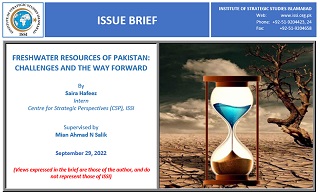Introduction
South Asia’s freshwater availability is declining at alarming rates, mainly due to expanding population and rising climate change vulnerability. Pakistan, in particular, faces a high risk of absolute water scarcity by 2040, currently standing at 14th rank in the list of 17 countries whose water resources are at extremely high risk. The groundwater resources of Pakistan are severely overexploited due to the inefficiency of irrigation networks. The surface water resources recharge 61 billion cubic meters (bcm) of groundwater while the extraction stands at 65 bcm (via 1.3 million tubewells). Furthermore, only 2/3rd of the available water is brought into use while the remaining 1/3rd is either wasted or discharged into the sea. With the depleting resources and increasing water demand, the status of Pakistan has drastically changed from a water-abundant country to a water-stressed country over the past few decades. [1]















